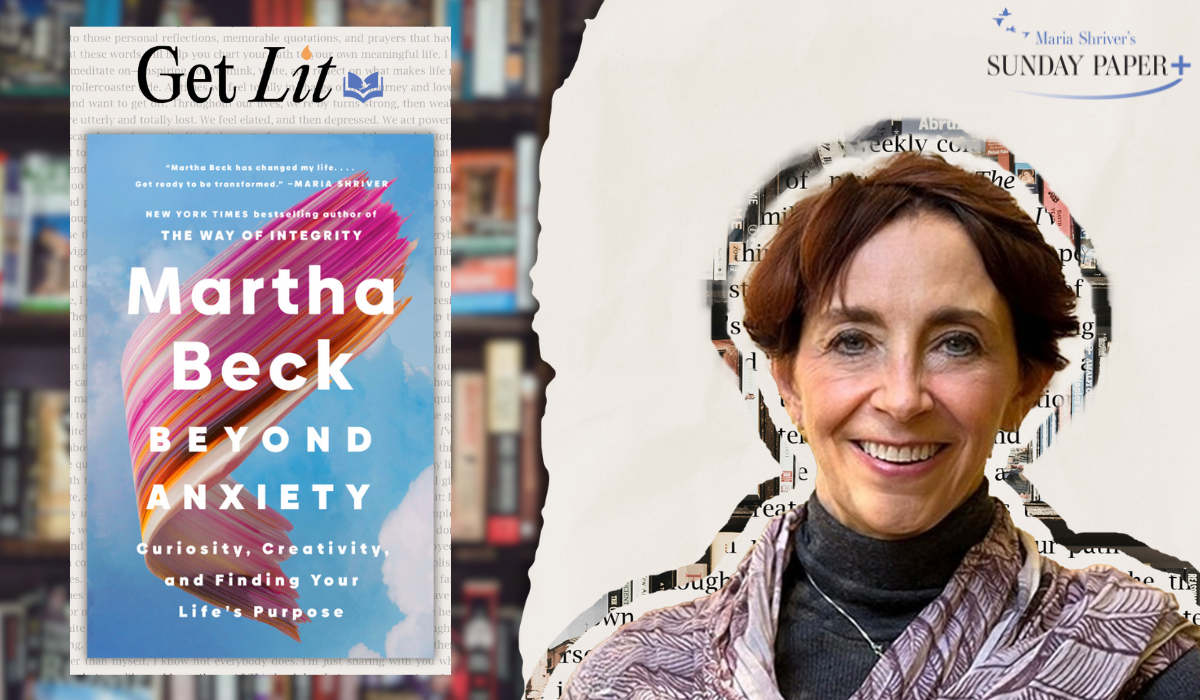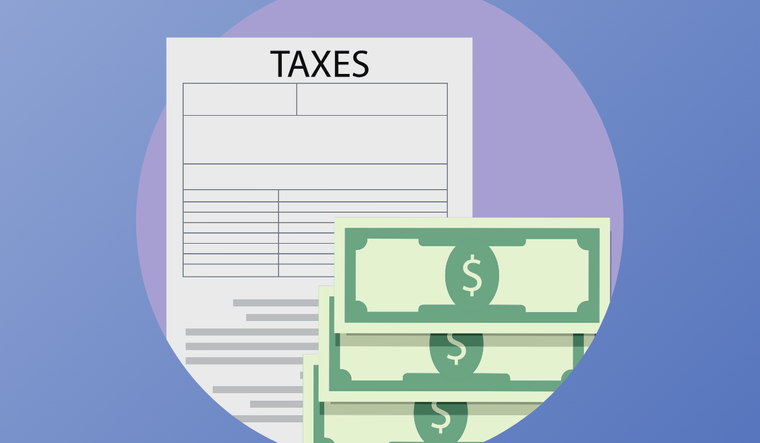Get Lit with Martha Beck: An Exclusive Excerpt from “Beyond Anxiety”
Who
Martha Beck, PhD, is a Harvard-trained sociologist, New York Times bestselling author, world-renowned life coach, and speaker. She is the author of one novel and nine nonfiction books, including The Open Field’s latest release Beyond Anxiety—out today!
What
Beyond Anxiety walks you through simple, powerful exercises that can help you step out of the “anxiety spiral” and into your life’s purpose. Below you'll find an exclusive look at this game-changing book and a brand-new episode of Above the Noise with Maria, where Martha breaks down the neuroscience behind anxiety and explains how we can immediately rewire anxious thoughts with creativity.
Why
Martha Beck says, “As long as you have a normal human brain, you’ll also have the capacity to slip back into anxiety. But as you learn the concepts and skills laid out in this book, it will get easier and easier to calm the frightened creature in your brain and liberate your creative side.”
“Every time you do this, you’ll move into greater heights of inventiveness, adventure, and exhilaration.”
& We
...chose Martha Beck as our SP+ Double Feature because in addition to being a beloved Open Field author, she has the tools you need to propel yourself into a life filled with peace, joy, and meaning. Martha draws from the latest research, her background in sociology, and her own personal experience to help us form an intimate connection with ourselves, with others, and with the world. Enjoy!
It’s an SP+ Double Feature!
Martha Beck also sat down with Maria for a brand-new episode of Above the Noise!

Here’s Your Exclusive Excerpt
Deep Green Self, Deep Green Earth
The first time I flew on an airplane at night, the view took my breath away. The cities below me blazed like galaxies, the roads between them sparkling like strings of stars in jet-black space. I remembered this sight a few years later, when I read a famous description of the brain written by neurophysiologist Charles Sherrington. This is what Sherrington said happens inside our heads every morning:
The brain is waking and with it the mind is returning. It is as if the Milky Way entered upon some cosmic dance. Swiftly the head-mass becomes an enchanted loom where millions of flashing shuttles weave a dissolving pattern, always a meaningful pattern though never an abiding one; a shifting harmony of subpatterns.
This shimmering fabric of energy allows us to do uniquely human things: think about the new day, chat with loved ones, check our calendars for appointments and our email accounts for messages. All of this relies on the human neocortex—a surprisingly meager structure, only about the thickness of four credit cards stacked up. From this little skiff of cells wrapped around our brains has come every uniquely human invention: agriculture, science, literature, mathematics, the Great Wall of China, the space shuttle, the mocha Frappuccino.
In many ways, we humans are like the earth’s neocortex: a thin layer of highly active entities, interacting and communicating constantly across the outer surface of a sphere. Like brain cells influencing the entire body, we have disproportionate power over the globe we live on. We can (and, on a daily basis, do) eradicate species, demolish whole biomes, shift the planet’s weather. And, like the brain, we have the collective capacity to awaken—not just out of our nightly nap but out of our illusions. And virtually all of our most damaging illusions, from the dread of our own mortality to the rejection of people who seem different from us, have anxiety at their core.
Healthy psyches, like healthy brain cells, are self-generating, self-healing, and self-driven to creative action. If we let ourselves gravitate to the places we love, doing things we love, with people we love, we generate results much greater than the sum of their parts. These days, when thoughts can flash from one mind to billions in an eyeblink, we may spark ideas that light up the whole human population—a planetary Eureka effect.
This chapter will discuss the impact you may have on the world if you choose to live beyond anxiety. Since people are drawn to calm, joy, and creativity, existing in this way tends to automatically draw like-minded folks together into groups called “social cells.”
This social structure is not held together by a set of rules that assemble groups in order to make objects, wealth, or war. Instead, the people who form a social cell are loosely bound by idealism and affection. As we’ll see, social cells may generate collective wisdom that is greater than the sum of its parts. Historically, such groups have often been the source of monumental changes in human ideas and activities. In other words, if you can calm your anxiety and live from your creativity—strictly for your own well-being—you just may end up helping to save the world.
Care of the Cell, Care of the Self, Care of the Soul
Most cells are squishy, delicate little things. Yet they can repair themselves, good as new, after being punctured, torn, or even ripped in half. The same goes for our selves and our souls. All of us face a world full of sharp edges. The slings and arrows of outrageous fortune pierce, cut, and rip us all. But even after sustaining terrible damage, a cell—or a self, or a soul—can not only survive but also heal and thrive. We can recover from almost anything as long as we do the two things our cells are designed to do: keep out toxins and take in nourishment.
The toxins of the mind, the things that can get right inside us and tear us apart like viruses collapsing a cell, are lies. As we’ve learned again and again throughout this book, our brains and bodies hate to lie. Believing anything that doesn’t align with the truth of our entire experience—thoughts like There’s not enough stuff for me! or I’m a worthless waste of space or I can’t do anything right or No one cares about me!—erodes our mental and physical health. Lies, even the lies we believe innocently because they’re part of our socialization, can send us down dangerous paths, make us self-destructive, or simply distance us from reality so that nothing we do seems to work anymore.
This is why I wrote a book called The Way of Integrity in which I argue that integrity is the one thing necessary for psychological well-being. I don’t mean performative “integrity” (a pious politician holding up a Bible to impress believers). I mean structural integrity: being united and aligned, like a living body with all its parts in working order. This kind of integrity requires that we let ourselves know what we really know, feel what we really feel, and act in accordance with what we genuinely believe.
After The Way of Integrity came out, many readers told me, “I live in integrity, but I still feel awful. I’m so, so anxious!” That reaction led me to write this book. Because these good, honest people were lying to themselves without knowing it. They couldn’t see a fact that may be clear to you now, though you might not have accepted it if I’d just blurted it out at the start of this book:
Anxiety always lies.
Always.
Remember, healthy fear is the truth: a clear impulse to act when, for example, there’s a leopard in your bedroom. Anxiety is only a thought: the fear of leopards when no leopards are present. You’ll always have your healthy fear. It can save your life; anxiety can only ruin it. Psychologists Dan Grupe and Jack Nitschke called anxiety “aberrant and excessive anticipatory responding under conditions of threat uncertainty.” In other words, it’s the terror of imaginary monsters in an imaginary future that may never happen.
Keeping Out the Toxins
Given the structures of our neurology and our society, it’s obvious why we terrify ourselves with such fictions. It’s not easy to stay grounded in truth when anxiety’s terrible stories are not only wired into our brains but also threaded through our entire culture.
Individually and collectively, we suffer from the left hemisphere’s solipsism, its utter conviction that its beliefs are factually correct, no matter how bizarre they may be. We truly believe that one political party (the one we don’t like) will bring total destruction on us all. We may feel certain that a specific diet—no meat, no carbs, no preservatives, no whatever—will prevent all the diseases we fear. Some of us order children around, while others permit them to do whatever they want, everyone believing that their own preferred method of child-rearing will protect their progeny from life’s hardships.
The reality is that all these well-meaning anxiety-based beliefs (and many, many more) are impossible to prove. We simply can’t know what will happen if a given politician wins. Some people get sick despite eating “clean” their whole lives. Children encounter suffering no matter how they’re raised. Insisting otherwise, trying to prove unprovable points, is stressful and draining. But if you use anxiety-calming skills, including the ones in this book, you’ll begin to see through anxiety’s deceptions. You’ll notice, question, and dismiss stories that only serve to frighten you, choosing instead to focus on what makes your life enjoyable and meaningful. You’ll be like a healthy cell, one that recognizes and automatically repels the virus of a frightening lie.
At this point, you may be thinking, Hold on a minute! Have you checked the news? Bad things really do happen; they really are happening, and someday they will happen to me. My anxiety stories are true! Again, this is an understandable reaction, but it’s still not the truth about your own present moment. Take a long, slow breath. Exhale completely. Look around you for “leopards”—that is, for any imminent danger that is physically here and now, as opposed to frightening thoughts. If you see danger, take action. But if you’re physically safe in this moment, you may want to say right out loud:
“Oh, how interesting! I am having aberrant and excessive anticipatory responses under conditions of threat uncertainty!”
Or, much better:
“You’re okay. We’ve got this. You can relax. I’m right here with you.”
Keep up the KIST until you can access Self-energy—enough of it to begin breathing more easily and feeling your muscles loosen a bit. This will put you back in touch with what you innately are: a consciousness that is calm, clear, confident, curious, courageous, compassionate, connected, and creative.
Remember, there’s nothing to do here. You don’t have to direct your psyche’s healing process, any more than you have to heal your own cells after they’ve been damaged. You couldn’t if you tried. But the intelligence of nature can, and will, if you simply surrender to what’s really here and now.
Above the Noise with Maria featuring Martha Beck

From BEYOND ANXIETY by Martha Beck, published by The Open Field, an imprint of Penguin Publishing Group, a division of Penguin Random House, LLC. Copyright © 2025 by Martha Beck.
Please note that we may receive affiliate commissions from the sales of linked products.




